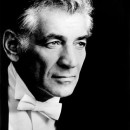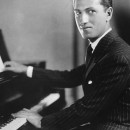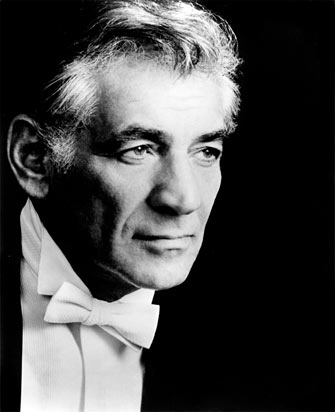Program Notes:
December 11, 2009
Leonard Bernstein: Clarinet Sonata
Leonard Bernstein’s Clarinet Sonata, published in 1942, was the first composition he published. This piece, composed while he was still studying at the Curtis Institute, has two movements: a lyrical grazioso and an Andantino – Vivace e leggiero. The first movement echoes Paul Hindemith in its neoclassicism; however, the melodic lines are uniquely American in their objectivity. The second movement begins with slow music, but melds into the vivace e leggiero with its jazzy rhythms and 5/8 and 7/8 time, foreshadowing Bernstein’s popular broadway musical West Side Story.
Joseph Horovitz: Clarinet Sonatina
Jazz continued to influence classical music well into the 20th century. Joseph Horovitz, currently Professor of Composition at the Royal College of Music, composed Clarinet Sonatina in 1981. He developed a blend of jazz/neo-classical that permeated many of his successful compositions. Light-hearted by nature, this sonatina follows the traditional three-movement pattern: Allegro calmato, Lento quasi andante, and Con brio.
George Gershwin: Three Preludes for Piano
When blues and jazz music first became popular during the beginning of the 20th century, George Gershwin was the composer who brought this music into the concert hall with his performance of his popular composition Rhapsody in Blue. Rather than scorn this music as beneath him, which many classical composers were doing, Gershwin was one of several composers who used jazz and blues to enhance his work, blurring the line between classical and jazz. Gershwin’s Three Preludes for Piano were first performed in 1926, and are well-known examples of 20th century classical music that were influenced by jazz. The first prelude, Allegro ben ritmato e deciso, is based on a five-note blues motif. Flattened sevenths give the piece a strong jazz feel. The second piece: Andante con moto e poco rubato, was itself referred to by the composer as “a sort of blues lullaby.” It starts slowly, with a steady bassline. The third piece, Allegro ben ritmato e deciso, also known as “Spanish Prelude,” is a brief but exciting blend of rugged jazz rhythms and syncopations. These short pieces show Gershwin’s brilliance at melding jazz and classical idioms; in fact, Gershwin went on to influence composers such as Leonard Bernstein and Aaron Copland, who would both go on to write pieces that would also meld jazz and classical elements.
Three Preludes for Piano were arranged in 1987 by composer and Julliard graduate James Cohn for clarinet and piano.
Robert Muczynski: Time Pieces for the Clarinet and Piano
Another late 20th century composer, Robert Muczynski, who is Professor of Composition and Composer-in-Residence at the University of Arizona, composed Time Pieces for the Clarinet and Piano in 1984. The piece, while drawing from jazz rhythms and blues harmony, also much resembles the musical vocabularies of Hindemith and Copland.




